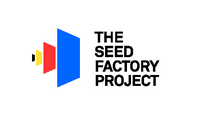The Seed Factory Project

- 2.3.2 Project Design Studies
2.3.2.3 - System Concept Studies
[edit | edit source]
A. - Embodied Energy Studies
[edit | edit source]
Embodied energy is the sum of all the energy required to produce any goods or services, considered as if that energy was incorporated in the product itself. In the context of Seed Factories, where we are producing such products, this energy must be provided as an input to the factory, or already included in parts and materials supplied from elsewhere. Direct energy use is relevant to the factory design as a requirement for operating the factory. Indirect energy used to make supplied parts and materials matters in two ways. Future factory upgrades will tend towards making more items internally. So what is indirect initially will become direct energy use later. Also, indirect energy, and what types are needed, affect the sustainability of the project.
Estimating and measuring embodied energy will be an on-going task in the project. During conceptual design, rough estimates will be made for the major factory tasks and flows. As the design matures, energy estimates can be maintained as one of the design features that are tracked. Finally, once actual hardware is built and tested, energy use can be measured and reported.
Study Approach
[edit | edit source]
2.3.2.6 - State of the Art Surveys
[edit | edit source]
The purpose of a state of the art survey is to document the current status of a given technology, system, or component. That information will be supplied to other engineering tasks or the public. The state of the art is only current for a single time and place. In general progress happens over time and as knowledge gets diffused. Therefore this task includes an initial survey to establish a baseline, and then updates as needed to stay current.
Inputs:
The task takes as inputs internal and external data sources, which include:
- In-house technical library:
- - On paper: ring binders organized by LC classifications, file drawers of bound documents
- - Electronic: e-books and other documents also organized by LC classification
- General libraries:
- - Personal paper books
- - Public & University libraries
- Online data sources:
- - Online search, technical collections, journals, etc.
- Expert individuals
Steps:
- Categorize data inputs as to part of the program, project, civilization, phase, system, etc. they apply to by program WBS.
- Identify sorting parameters for the data inputs, such as age/date, data quality, tech readiness level, etc.
- Prepare a review document by technology, covering past history, current applications, research in work by TRL, and proposed future development.
Outputs:
- Survey reports, handbook sections, and review articles supplied to other engineering tasks and the public.
Level 4 Heading
[edit | edit source]
